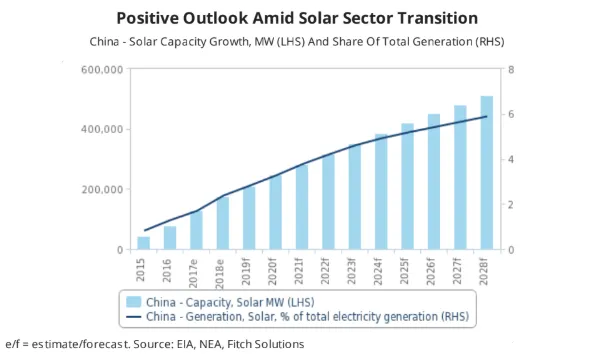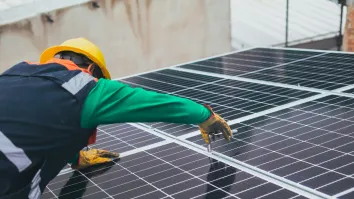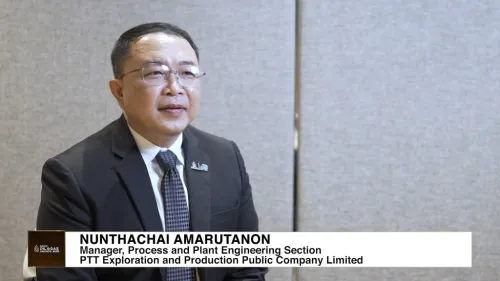
Inland provinces to drive China's renewables growth until 2028: report
Cost-competitiveness of new projects could be in line with the subsidy phase-out in 2021.
China's renewables growth is expected to become centred in inland provinces over the coming decade, as cost-competitiveness of new projects become key in line with the anticipated phase-out of subsidies for the sector from 2021, Fitch Solutions said in a report.
The availability of land in provinces such as Xinjiang, Gansu, Qinghai and Inner Mongolia, in addition to the favourable solar irradiation rates registered for these locations, meant that China's initial solar power growth boom was firmly centred inland. The four provinces made up 56% of total installed solar capacity as of 2014.
Whilst the four provinces of Xinjiang, Gansu, Qinghai and Inner Mongolia remained the biggest solar provinces in China as of end-2016, the growth impetus of the sector was more diversified between all of China's provinces between 2014 and 2016 than before 2014, according to Fitch Solutions.
Shandong registered the second-fastest provincial solar expansion growth between 2014 and 2016, totalling 4GW compared to Xinjiang's equivalent 5.9GW growth over the same timeframe.
“This watered out the dominance of the four highlighted inland provinces in China's solar expansion and they thus only comprised 37% of total installed solar capacity by the end of 2016,” the firm said.

Grid bottlenecks
One of the key reasons the inland provinces faced a slowdown in growth, while alternative provinces registered accelerating growth, can be attributed to grid bottlenecks.
“The rapid build-out of renewables capacity inland was not accompanied by sufficient investment into grid infrastructure, in turn leading to substantial renewables generation curtailment inland. In fact, wind generation curtailment in 2016 was as high as 43% in Gansu and 38% in Xinjiang. This, in turn, highlights what was an increasingly challenging environment facing the solar sector in these provinces,” Fitch Solutions said.
As a result, solar development in most inland provinces completely stagnated between end-2016 and end-2018, as these grappled with high renewables generation curtailment rates. In terms of net solar capacity additions over this timeframe, the former growth hotspots of Gansu and Xinjiang only added 1.4GW and 900MW respectively.
“This slowdown was also a result of the Chinese government restricting growth in provinces with substantial grid curtailment. As a result, they were only the 19th and 25th fastest expanding provinces in China over this timeframe, compared to the top five of Shandong (9GW added), Zheijan (8GW), Hebei (7.9GW), Jiangsu (7.9GW) and Anhui (7.7GW),” Fitch Solutions added.
Inland province growth
The growth surge in coastal provinces is projected to be replaced with a greater emphasis on inland provinces again as solar subsidies are phased out. “Growth over 2017 and 2018 was aided by distributed solar capacity (projects <20MW), which had access to more incentives than utility-scale solar capacity which faced steeper feed-in-tariff (FiT) cuts over this timeframe,” Fitch Solutions said.
The smaller distributed solar projects, in turn, aided solar capacity development in China's coastal regions, where land availability curbs the scope for larger utility-scale projects. Fitch Solutions commented, “Crucially, as China faces out subsidies for solar power development, we expect there to be more of an emphasis on developing larger projects - thus making inland provinces more attractive again.”
This inland shift was further supported by China’s first unified bidding round for photovoltaic solar power in July 2019. Solar projects worth a total of 22.78GW were given the go-ahead by the Chinese government of which nearly 80% were utility-scale projects.
“This utility-scale project share of total, coupled with an average submitted bid of $47/MWh for the successful projects (close to the various provincial coal benchmark tariffs), highlights an overarching focus on registering cost reductions,” Fitch Solutions said.
“Given that FiT payments worth $18b were owed to renewables generators as of end-2018 (with curtailment being a big culprit), we believe cost reductions will remain at the forefront of Chinese government considerations as it seeks to make renewable energy cost-competitive vis-a-vis coal. This will in turn support utility-scale development, by extension favouring inland development,” the firm said.
While the continued curtailment in Gansu and Xinjiang excluded the two provinces from the first bidding round, steadily falling curtailment rates are expected to unlock the two provinces for growth in the longer term. Gansu only registered a curtailment rate of 19% over 2018, a substantial reduction from the 43% registered over 2016. In Xinjiang, curtailment fell from 38% to 23% over the same timeframe.
“As these figures improve further, we expect solar development to be revived in future bidding rounds as developers capitalise on the favourable natural conditions for solar power in the two regions,” Fitch Solutions said.



















 Advertise
Advertise








